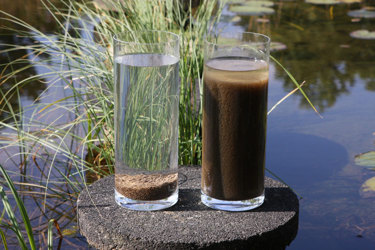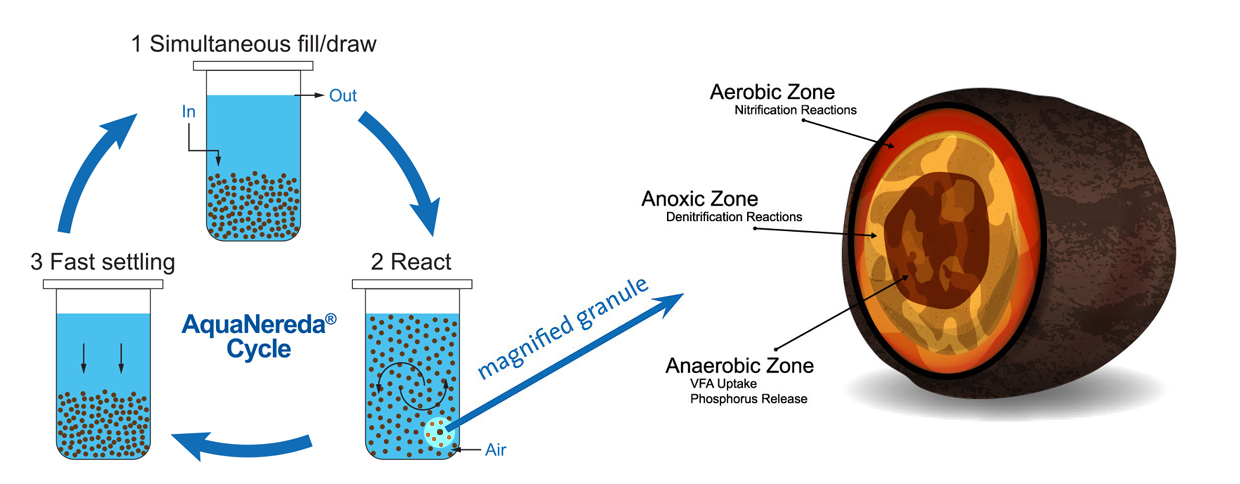AquaNereda® Aerobic Granular Sludge Technology System

The AquaNereda® Aerobic Granular Sludge Technology is an innovative wastewater treatment technology that provides advanced biological treatment using the unique features of aerobic granular biomass. The unique process features of the AquaNereda technology translate into a flexible and compact process that offers energy efficiency and significantly lower chemical consumption.
An aerobic granular biomass is comprised of compact granules, which are a layered microbial community that provides superb settling properties. Within a single tank, the system creates proper conditions to develop and reliably maintain a stable granule, without a supplemental carrier. The granule layered aerobic and anaerobic zones allow for simultaneous processes to take place in the granular biomass, including enhanced biological phosphorus reduction, and simultaneous nitrification and denitrification. The unique process features of the AquaNereda® system translate into a flexible and compact process that offers energy efficiency and significantly lower chemical consumption.

Features & Specifications
- Robust structure of granule withstands fluctuations in chemical spikes, load, salt, pH and toxic shocks
- No secondary clarifiers, selectors, separate compartments, or return sludge pumping stations
- Settling properties at SVI values of 30-50 mL/g allow MLSS concentrations of 8,000 mg/l or greater
- Proven enhanced biological nutrient removal (ENR)
- Simplified operation with fully automated controls
Benefits
- Optimal biological treatment is accomplished in one effective aeration step
- Four times less space required compared to conventional activated sludge systems
- Energy savings up to 50% compared to activated sludge processes
- Robust process without a carrier
- Significant reduction of chemicals for biological nutrient removal due to the layered structure and biopolymer backbone of the granule
- Lowest life-cycle cost
